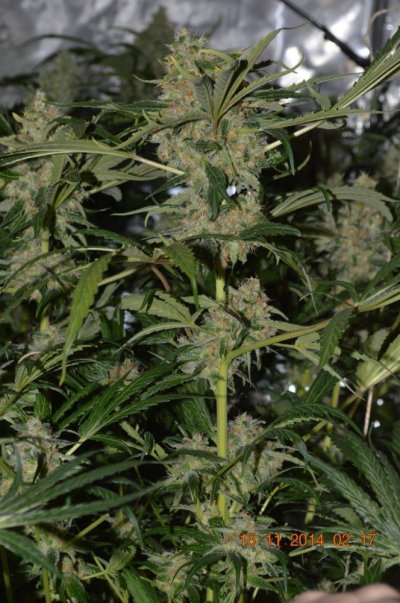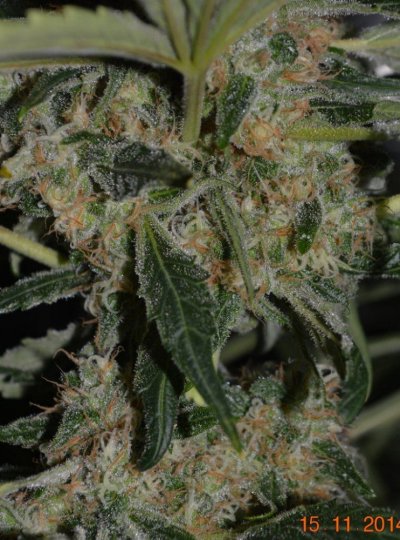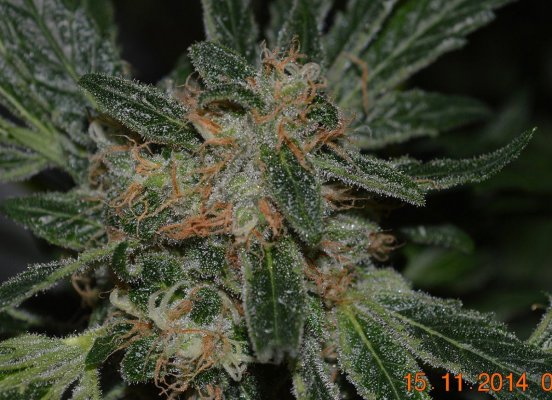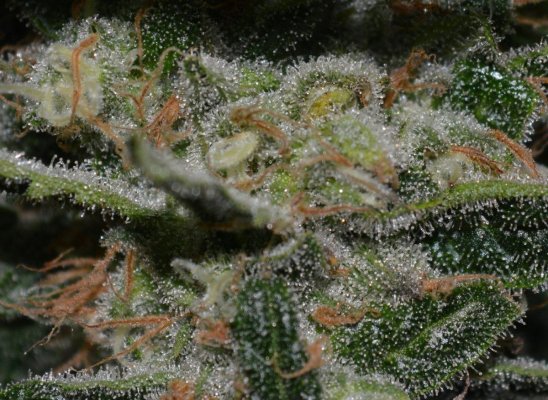I got a breeders question for you guys. When I read about inbreeding backcrossing or pure breeding, writer implies that you lose potency and vigor.
Writer is by itself, generally speaking, correct. With back crossing one can cross multiple plants back to the recurrent parent, basically select the best (potency and vigor) AND most suitable (genes/genotypes) every round, so that's a bit of a special case, but when it comes to pure line breeding in general, i.e. creating a true bred IBL, breeding true aka locking traits in, that is is essentially done by breeding other genes out.
If you breed the hypothetical simple genotypes AaBbCCDdeeFf true, for example: AABBCCddeeFF you basically remove the a, b, D, and f genes from the pool.
Creating feminized seeds is actually a good example of breeding a trait true. You map a phenotype/trait (female sex) to a genotype (XX), and cross two XX (homozygous for X) to get XX in all offspring, and not XY (male, heterozygous). You essentially breed Y out by crossing XX with XX, while obviously that Y gene has functions too.
That's desirable for the traits of which you want to breed the genotypes true, but, there's also GgHhIiJjVvZz (for example) and many other "heterozygous" genotypes you don't see or can't observe as easily. For example things like bud rot resistance, or stress resistance, or Zz might just be the specific gene combi partly responsible for its vigor (very possible actually, being that hybrid vigor IS the result of heterozygous genotypes).
That's, amongst others, why a large plant count (to select individual plants from) is important. The more plants you grow from each generation, the higher the chances to being able to select plants with the desired
genotypes AND are vigorous and potent and the less chances you will encounter breeding depression.
My question is will I lose potency or vigor if I back cross so many times or inbreeding to tight? Keep in mInd I select for vigor and potency also but will my pool get smaller?
In practice, that depends on several factors. How many plants you select from, how many plants you pollinate with each other, and above all which plants. Inbreeding to a next generation by itself has as few benefits as it has downsides. It's the genetics make up of the parents that matters (unless you keep breeding in for mutations or recombination). An F6 is not necessarily more stable/homozygous than F3 (think auto flowering genes..., or better photo flowering genes in a cross with auto genes in it), and an F20 doesn't have to suffer from inbreeding depression (which is the result of breeding out genes) by default.
To breed that hypothetical simple genotypes example AaBbCCDdeeFf true, into for example, AABBCCddeeFF, you need to find and cross two plants in which that is the case already (2 homozygous parents create 1 homozygous line, consistently, generation after generation). Unless you grow out a huge amount of plants, you won't likely find such plants in F2 already (because of Mendel's second law:
http://en.wikipedia.org/wiki/Mendelian_inheritance ) And if you are so lucky to find the ideal plants (in which you suspect or know a trait is homozygous) they may not be the most vigorous and potent.
Selecting the best of the best should really mean selecting the best of the best when it comes to potency, vigor AND genotypes. Only a large plant count to select from will give that luxury. Some generations you may just be able to lock 1 trait in, or even less... while at the same time, unknowingly you likely breed genes out. Eventually good ones too, or ones that may have been of good use later on.
Farmers, and breeders especially pre modern plant breeding, do the opposite of creating a pure line to avoid inbreeding depression, they cross many different plants with each other to keep a population heterozygous to ensure it's survival by keeping it's gene pool wide. They still select the offspring from the best plants of course. For some crops wild ancestors are sometimes added deliberately to widen the genepool (which in practice means more heterozygous genotypes, and less homozygous, thus less bred true /pure line).
For increasing potency, yield, vigor and other general features that are determined by many different genes, the oldskool method is best, basically recurrent selection (hunt for the best phenos every round) is sort of like the brute force method. Effective, but not precise. It's what the pioneers HAD to do, to domesticate and acclimatize amongst others.
For breeding specific traits true (taste, smell, color, apical dominance, anything of interest to the breeder who set the goals for that specific breeding project), it should generally be done in as few generations as possible.
Inbreeding depression is not from some weird mutation from mating with relatives like Wrong Turn movies may imply, it's from breeding out good genes. It's literally, unnatural. It goes against nature's way to ensure variation in and between species and hence their survival.
The easiest efficient method is
selfing a population (s2 and on should be a population, not a line from 1 plant). Every generation the population will be 50% less heterozygous (because heterozygous x heterozygous leads to 25% AA, 50% Aa, 25% aa, i.e. 50% homozygous and 50% heterozygous). This is also the fastest way to run into inbreeding depression as it will reduce heterozygosity for all genes, not just the ones for the traits you want to breed true.
The are very good reasons to do so though. The obvious is uniformity and to save that in seed form.
Once you have two homozygous IBLs and cross those, you get a lot of heterozygous genotypes again (uniform for growing), and you sort of undo the inbreeding and CAN, additionally, get more than the best of both. The other is what enabled us to create enough food to be for us all to survive on this planet: F1 hybrids that express hybrid vigor.
Probably a bit more than you asked for... not trying to be the all knowing smart ass on the matter, writing it out does a lot for organizing my thoughts.









